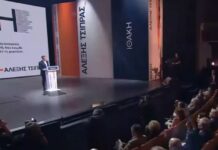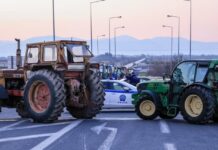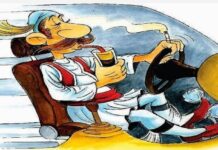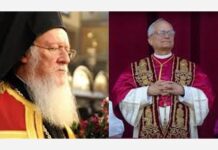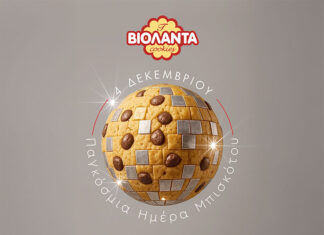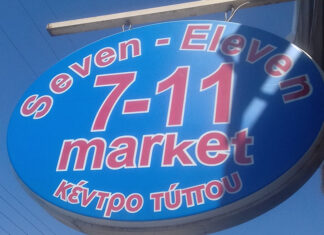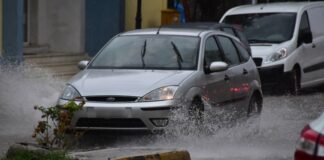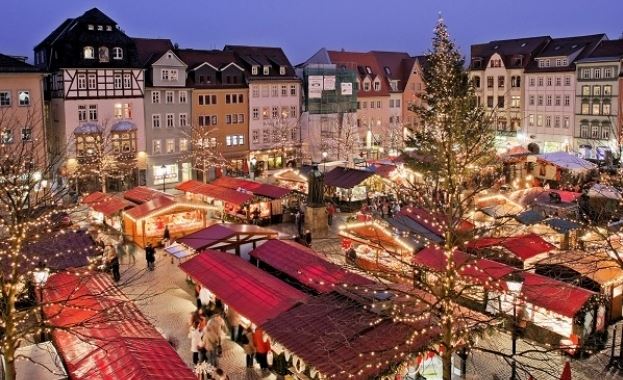
There is no doubt that Christmas and Easter are the two biggest celebrations, in the Christian world, around the globe.

And especially Christmas is celebrated with great splendor. Almost everywhere. Unlike Easter where the contrition and sorrow for the divine drama dominates.
And since we are now a few hours after the birth of Christ, what would you say if we went around Europe and see the way it is celebrated?
With a reminder: From continent to continent and from country to country traditions maybe different, but almost all countries have a common reference point: A saint!
For the Orthodox and Catholic world is Santa Claus.
For the countries of the North is Saint Nikolas.
In the Netherlands, Saint Nikolas arrives every Christmas at the major port of the country, Amsterdam, along with his faithful companion that has a black color and is called Peter. Peter has a mission to punish children who were naughty last year.
In the harbor thousands of children gather in a festive atmosphere to welcome Saint Nikolas who appears on a white horse.
The celebrations finish on the night of Christmas when in the houses, gifts are exchanged and the traditional borstplaat is offered (candy with fruit or coffee flavor) and speculous (sweet with farina, cinnamon and brown sugar).
In Austria, nearly all of December there is pervasive romanticism. In Vienna, in front of the large square hall, a huge Christmas market is created. All Austria is illuminated and huge “construction sites” are created in towns and villages, in which cookies are prepared and offered.
In Portugal, the preparations of Christmas start from December 8, when in Lisbon a huge manger is constructed.
On the eve evening, united the country goes to the churches. Millions of believers go to pray and hold in their hands gifts (eggs, nuts, chicken, etc.). After the mass they return home where they exchange gifts and eat bacalhau cozido com todos (boiled cod with various vegetables).
In England, the shop windows are decorated festively from early December. The cities are decorated with mistletoe, as the doors of houses and fireplaces are decorated with garlands, wreaths, cards and knitted socks. Children write letters to Santa Claus which sent their greetings and request their gift. They throw the letter into the fireplace so that the smoke can get it with it and through the chimney to send it to the North Pole.
As for food? The turtle soup, the fried stuffed turkey, stuffed eggs and pudding, are found in every English family table.
In Germany, in Berlin, in Munich, hundreds of stands with merchandise are set up in large squares. And in Nuremberg, in Hauptmarkt square, in the old city center the big market dating from 1600 – is revived. With booths made of tinsel angels, the hand carved wooden soldiers, pompous and luxurious ornaments, the tree and the houses, made of honey cake ¬ lebkuchen, as the locals call it.
It is the only bazaar in the world where one will find the zwetschegen maennlein, ie little people made of plums. The peak in the Nuremberg market reaches when one night in mid-December the city lights fade and about 3,000 children with lanterns in hand gather and begin a procession to the town castle singing carols. Through the centuries, almost every village in Bavaria has developed its own kind of art. However, straw stars for the tree top are a hallmark of this region.
One of the main traditions in Germany, is the so-called «Adventskranz». This is a candlestick from fir twigs that are woven so as to form a wreath. Upon the wreath there are four places with candles, symbolizing the last four weeks before Christmas. Every Sunday they light a candle, counting down the time remaining for the coming Christmas. Ie four weeks before Christmas they light a candle, next week two, the one after that three and finally on the last Sunday before Christmas four candles are lit.
In Russia where they kept the old calendar, the festivities include fasting 39 days until Christmas Eve, celebrated on January 6th. Their festive meal consists of … 12 dishes in honor of the 12 Apostles and at Christmas day they go to church singing Christmas carols and hymns. And for the children … there is the traditional figure of Ded Moroz, who, is something like Santa Claus, giving the gifts with his granddaughter, Snegurochka.
And one last and unfortunate incident. The stillness of international financial markets impacts on Santa Claus as well. He fell out of the budget and the problem is big. This year the big party at Giakompsaoun Greenland will not happen. Pity! Last year, there was a global concentration of 17 Santa Claus’ from all over the world. Where, there were competitions for the fastest beard trimming, loudest volume of voice commands for the reindeers, for the fastest gift door to door delivery, a chimney descent and climbing after a consumption of a whole plate with sugared buns and so on …
See you Next Year..


